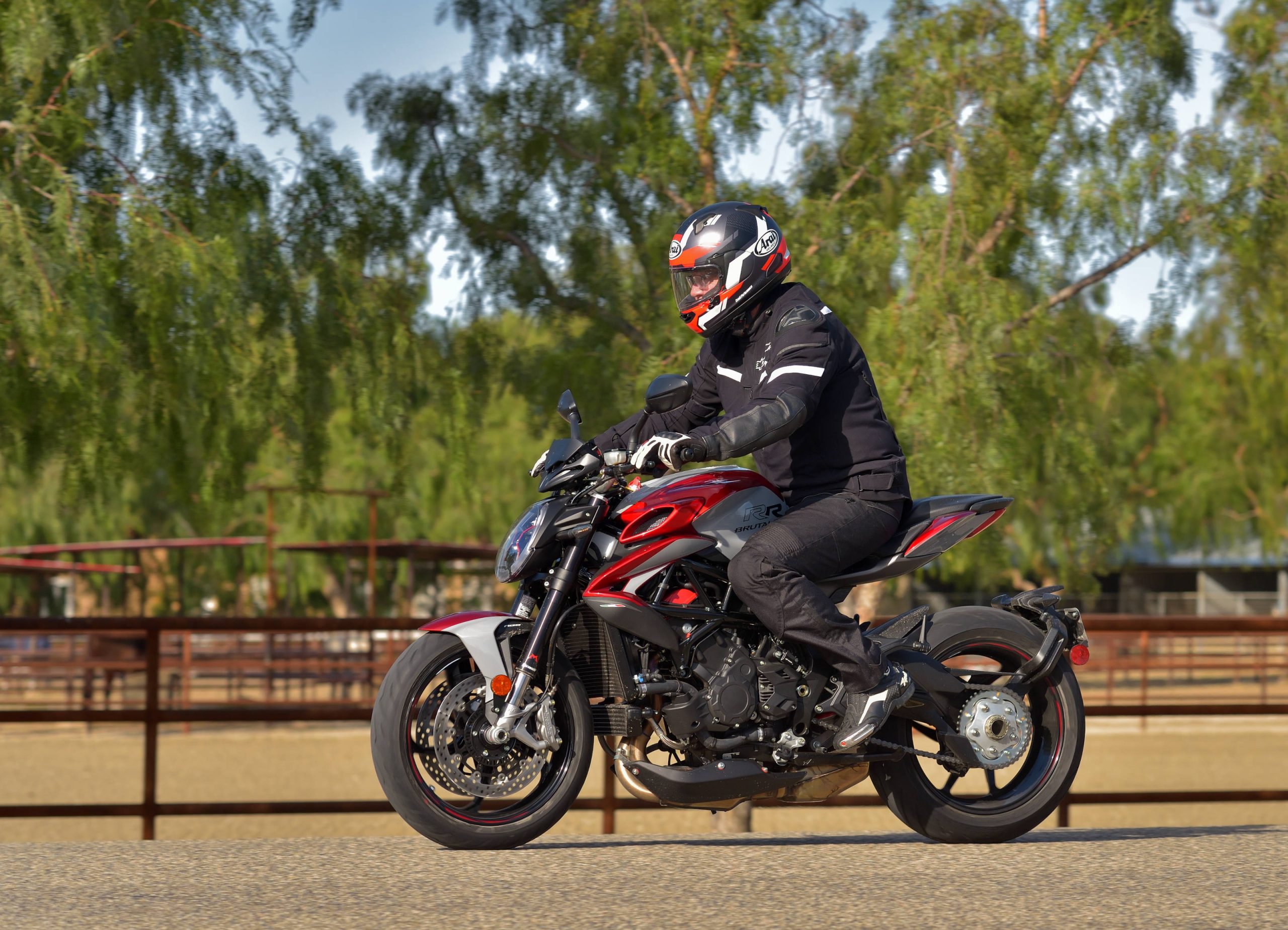
You can consider our first impressions article a Part One of the MV Agusta Brutale RR review. This is the complete review.
There are two things most every motorcycle enthusiast realizes when it comes to MV Augusta motorcycles. They are exotically designed and beautiful, and they are also quite expensive .
When we tested the 2016 MV Augusta Brutale 800 (a predecessor to the model under test here), we came away very impressed. First of all, MV Augusta had developed excellent engineering and performance solutions to go along with its exotic, good looks. It was still an expensive bike, but it performed quite competitively with the best competition.
The same can be said for the new MV Augusta Brutale RR. MV has outstanding, and even unique, features that have been engineered and tested to perform quite well in the real world.
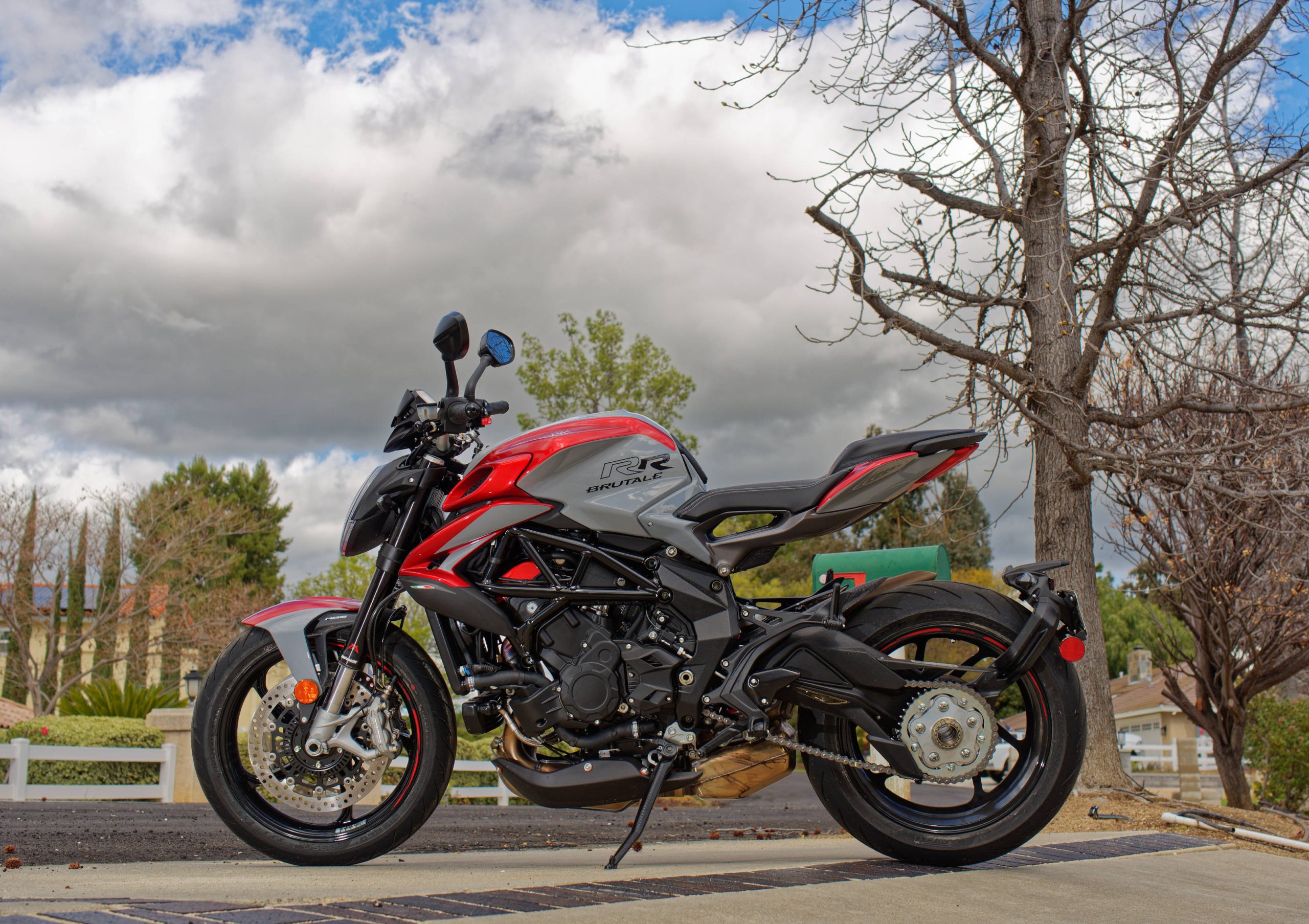
First and foremost, the 800cc triple makes enormous horsepower for its displacement. MV claims 140 hp at the crank, which is frankly quite amazing for an 800cc triple. As we found out, the bike is indeed very quick, but we were unable to test this horsepower claim on a dyno.
The chassis is, perhaps, equally impressive. You can judge the appearance for yourselves from MD’s photos, and a quick visit to the MV Augusta website. In our opinion, the bike is beautiful. It has an elegance and a look of power (brutality, if you will), but It certainly doesn’t stop there, as the components, frame and balance found on this machine are hard to fault.
A modern, 5.5 inch TFT display is where the rider will see the various settings, which are controlled from the handlebar switchgear. Bluetooth allows the rider to connect to a phone, and even to set bike preferences, and record trip information.
As we said earlier, the prior generation of the bike already had a balanced, responsive chassis, but there are improvements to the frame in this latest model (originally introduced in 2021). Thicker, stronger frame sections improve the rigidity of the chassis, from which a 43 mm Marzocchi fork and a Sachs shock absorber are hung. Both units are fully adjustable, and the rear linkage system has also been revised for this generation to provide improved progression from the shock.
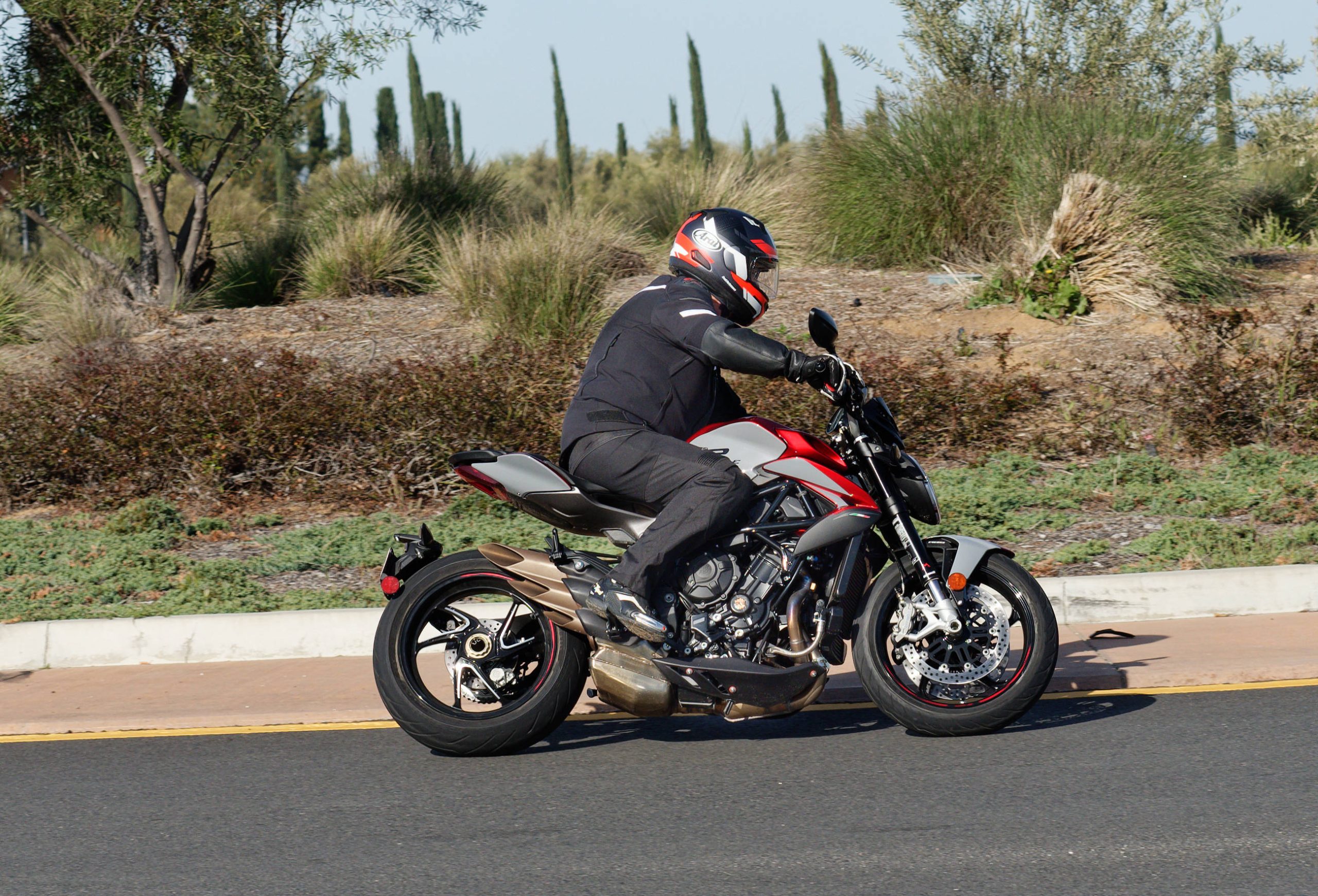
The front brakes feature Brembo calipers clamping 320 mm rotors and the standard steering damper is adjustable. All lighting features LEDs.
Back to the engine, which features new, higher pressure injection, entirely new exhaust system, and an up-to-date electronic control suite.
The new six-axis IMU allows a myriad of electronic interventions, including cornering ABS, launch control, wheelie control, traction control and even rear wheel lift control under braking. The sophistication of the system allows subtleties, such as controlling the height of the wheelie without an abrupt cut to the power (holding the wheelie at a certain loft, for instance).
A quick-shifter is standard for both up and down shifts. The smart clutch system (SCS) automates clutch control and eliminates the need to even pull the clutch when reaching a stop or pulling away from a stop. Dirtbike riders might be familiar with the company Rekluse, which worked with MV Augusta to fine-tune the system
As we stated in Part One, the Brutale RR we are testing is in the highest state of tune offered by MV. The entry level Rosso model puts out a claimed 112 hp, while the RR makes a very impressive claimed 140 hp.
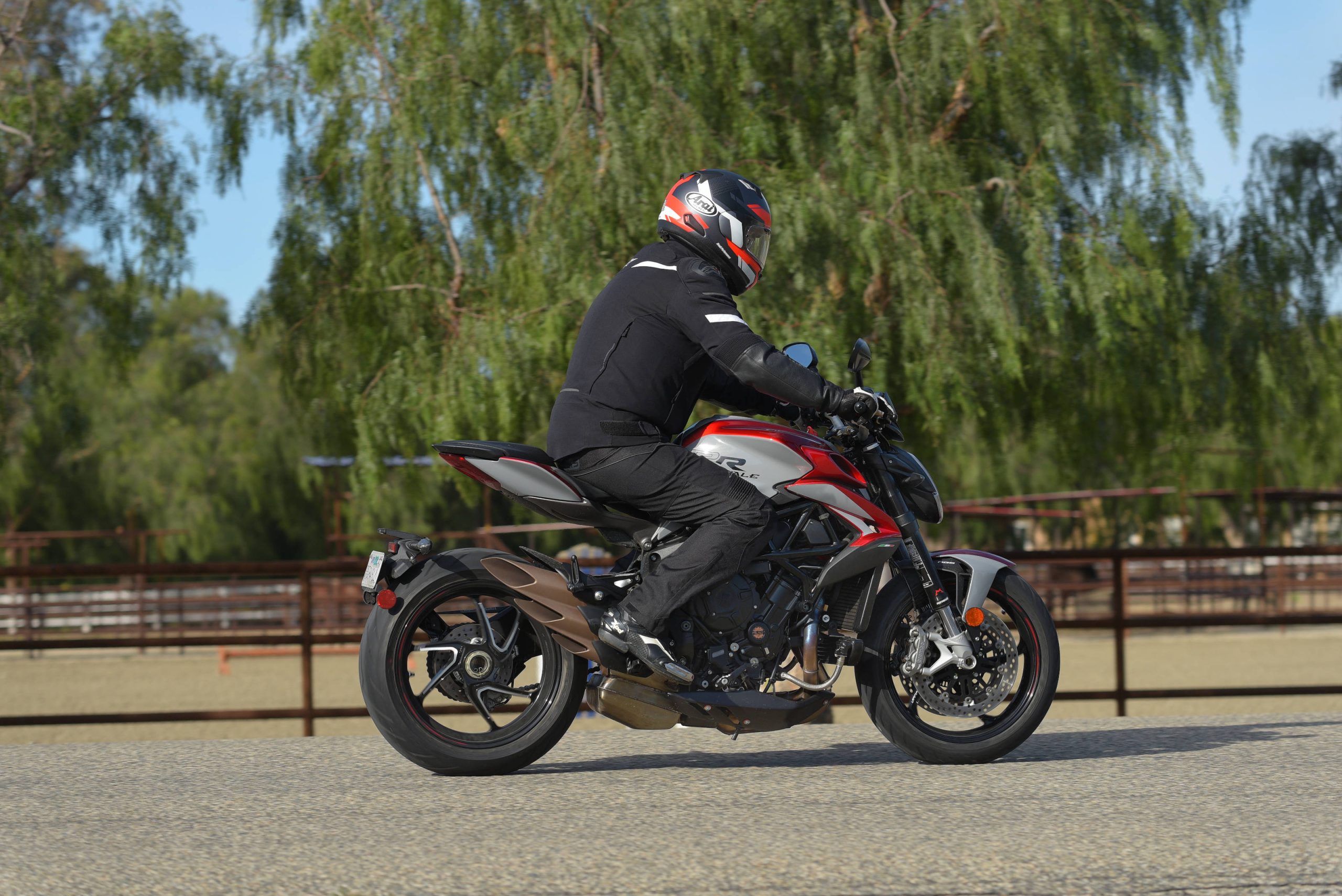
When a relatively small displacement engine makes huge horsepower, you would typically find a peaky power delivery. Low power at lower rpms, and even mid-range, rpm levels, combined with a powerful, sudden rush of power on top. This bike somehow avoids that circumstance.
The power of the bike is somewhat shocking for its engine displacement, but perhaps even more shocking is the broad spread of that power and the quality of the fuel injection tuning. Even below 4,000 rpm, power comes on smooth and predictable, and builds in a linear fashion from there all the way to the power peak at 12,300 rpm. We rode primarily in Sport mode, but fueling was smooth and predictable in each of the engine map modes.
The ergonomics are comfortable and upright. The handlebar is quite wide, offering very good leverage and allowing the bike to change direction with little effort. The bike combines good straight line stability with a nimble feel.
Seat comfort is reasonably good for the first hour, or so, but then can feel a little too firm.
The ability to operate the bike without using the clutch is quite strange, at first, for someone who has spent their entire life operating motorcycles with a manual clutch. Getting used to a bike with a quick shifter is one thing, but a bike that can come to a complete stop without pulling in the clutch is another.
Pulling away from a stop without using the clutch can be a little abrupt and jerky feeling, at first, but then you calibrate your brain to the system, and can pull away smoothly.
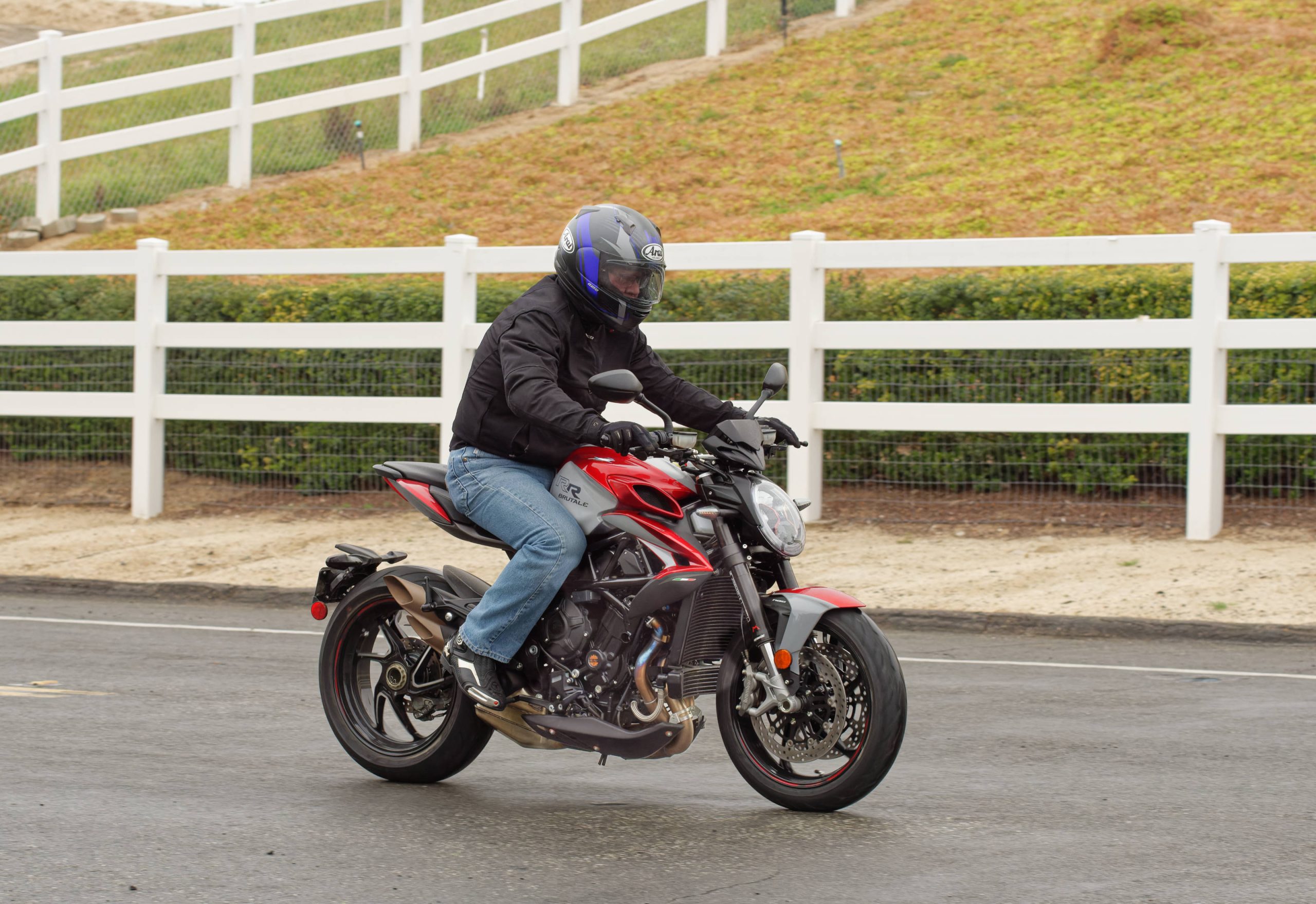
The quick-shifter works quite well, even matching engine rpm while downshifting. Those downshifts without the clutch are useful during aggressive riding, and do not lead to abrupt engine braking, as the clutch slips just enough to control this.
Speaking of slowing down, the Brembo brake system offers plenty of power and good feel. If we have a complaint, at this price point (more about this below), you might be entitled to expect the latest Brembo Stylema calipers, but the calipers on this bike are one step below that top drawer.
The suspension works well, but it’s slightly under-sprung, and under-damped for larger, faster riders. Our test rider weighed in at roughly 200 pounds with gear, and gradually stiffened the compression and rebound damping at both ends, while also adding some spring preload to the rear shock. After turning the adjusters to nearly full hard, the bike responded well to very aggressive riding in the canyons. Lighter, less experienced riders might find softer settings perfectly acceptable.
Our testing occurred during an extremely wet winter season by California standards, but we did find occasion to push the bike on relatively dry roads. The bottom line is that this Brutale RR is a fast, fun bike with a well-balanced chassis that should compete well with other bikes in this class, including Triumph Street Triples and KTM Dukes, for example.
And of course, an MV Agusta offers something else. Exclusivity and intriguing design. The fit and finish of the bike appears excellent and staring at the exposed trellis frame, single-sided swingarm, floating seat unit, and other design elements is worth something. The consumer has to decide how much that is worth.
As we pointed out in the first part of this review, MV Agusta in the United States is largely now under the control of KTM and its sister corporations (under the common ownership of Pierer Mobility). We expect this to result in improved parts availability and an increase in dealerships offering MV Agusta motorcycles. We don’t have specifics about this at this time, however, so look for a subsequent article on MD addressing this topic.
The U.S. MSRP for the MV Agusta Brutale RR is $19,998. Visit the MV Agusta website for additional details and specifications.
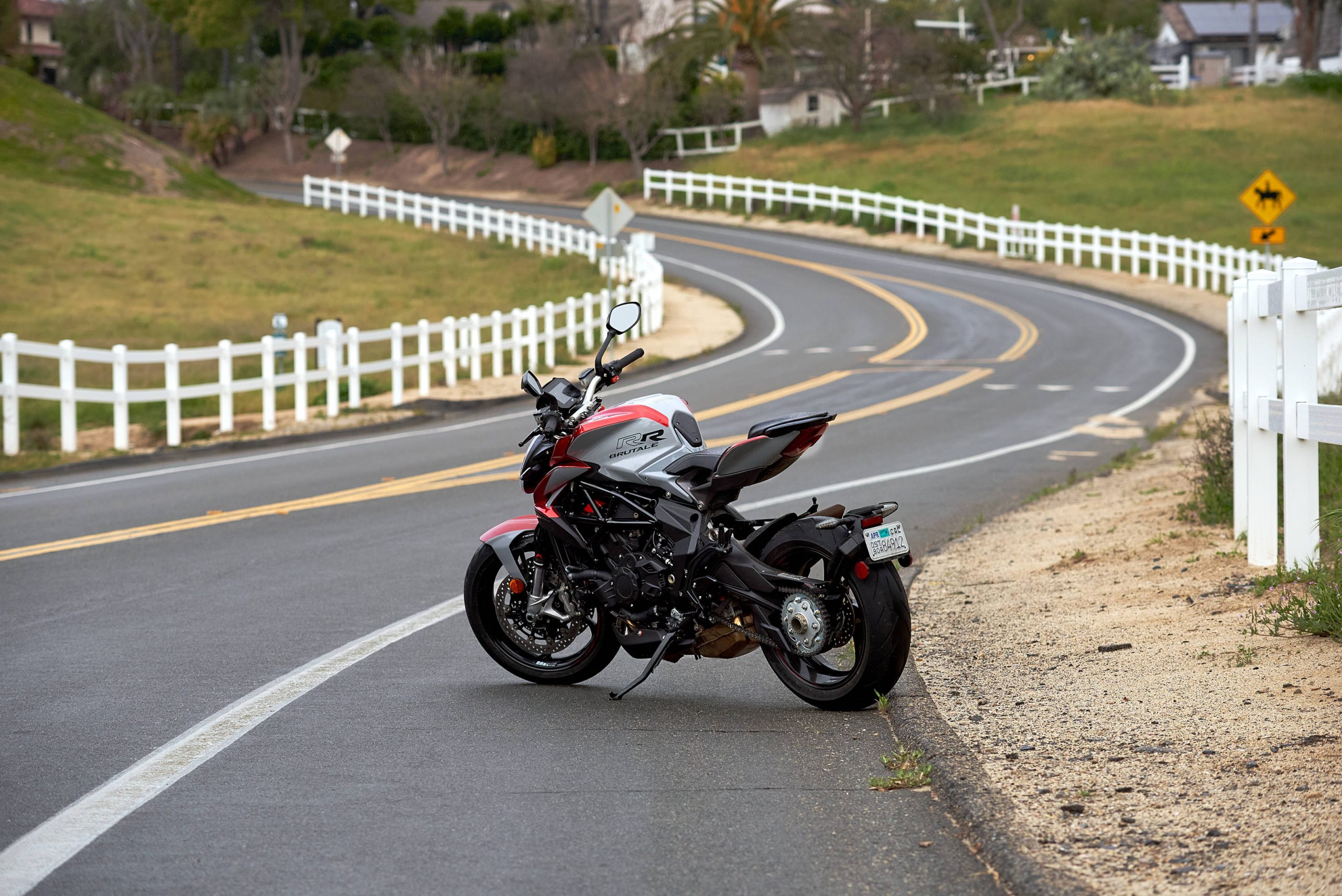






It would be cool to take one of these, lengthen the wheelbase a tad, add a larger tail section, a half fairing and some large, nicely integrated luggage to make a sport touring version. Probably jettison the Rekluse clutch since those only seem useful on woods bikes.
MV is not expensive. Look at Ducati models prices.
I often wondered when a street bike would get a Rekluse style clutch. I have three dirt bike with three different versions of Rekluse clutches. I must say that I don’t think that the most recent version that I have is the best one. But for the most part, you could ride a bike that has a well set up Rekluse and not know it until it doesn’t die when you make a clutching error.
Some of the recent dual sport bikes have a lot of flame out issues in technical riding, due to their lean fueling. Those bikes would probably be better off with a Rekluse clutch. There’s nothing worse than a four stroke that likes to flame out.
Just to be clear. You really can ride a bike with a Rekluse all day without touching the clutch. Or you can use the clutch as you normally would on any other bike. If you want to fan the clutch to explode out of a corner in two stroke fashion, you can do that no problem. You can also kick start the bike clutch out in second gear on a dead engine start, at a hare scramble or whatever, and get a really good start. The way the clutch engages as the engine starts provides an excellent roll out. The bike gets really good initial traction.
I haven’t used a Rekluse on the street. But I have used one at a supermoto race. It worked just fine and I enjoyed good starts more often than not.
I’ve been aware of Rekluse clutches for a long time but never had any experience riding one. The guy who told me about them was a very skilled woods racer at the time and had mixed feelings about it because he manipulated the clutch a lot. He said he used it to keep from stalling his 4-storke and lighten workload when it wasn’t as technical. I wondered if they behaved like CF clutches and disengaged whenever the engine revs dropped. Do Rekluse clutches preserve engine braking? If so, that’s a pretty neat trick.
Engine braking yes. As far as I know. I have little experience with them on a four stroke. But all my engine braking is intact on my two strokes, which don’t have as much engine braking as four strokes do.
The system works on the speed of the clutch basket. So as long as you don’t pull the clutch lever to disengage the engine and transmission when they are spinning fast enough to engage what is basically a sort of fly ball goverenor, you get what everyone else gets. You basically only notice a Rekluse when you expect it to work. They don’t have much downside. The system eats some power when it is not fully engaged. So you do lose some low end snap on two strokes running low RPM. But four strokes are usually spinning faster. So that would be less of a problem because the clutch would be fully engaged pretty quickly once you got out of a flame out risk RPM on a four stroke.
Two strokes might sound like they are revving fairly high. But they make noise twice as often. The shafts inside the engines aren’t listening. Four strokes actually run a higher average RPM.
Rekluse are user adjustable.
Engine braking is the same. Once the clutch is engaged it stays engaged until the engine gets near idle speed.
I often wondered if they could incorporate a slipper clutch function for the four stroke guys. That would be a huge value add. The last off road four stroke I had, before I gave up on them entirely, had a slipper clutch. It worked great for things like supermoto and ice racing where you go from high speed to low speed areas quite often.
For slow-speed stuff clutch control is essential and a basic skill (it’s funny to watch unskilled duck-walkers).
I won’t get anything that has some kind of automated system like this. Heck, I shift without the clutch over half the time anyway.
It’s not like you can’t use the clutch, you just don’t have to. Low speed stuff can also be preformed in a negative fashion by holding a little power and feathering the brakes. That can come in pretty handy once in a while.
I have had guys ride one of my Rekluse bikes and not know that it was so equipped. They used the clutch like normal and didn’t notice a thing. It is a feature that you don’t have to use.
I have a 2022 model of this bike, which I absolutely love. But there are a few flies in the ointment not mentioned.
The fueling in my bike off idle and at very low speeds is extremely snatchy and difficult to control. It is often necessary to slip the clutch when traversing a 15MPH school zone. At my first annual service I asked if a EMU update was available to fix this, but the answer was no. One can hope.
Also the warning lights for the turn signals, oil pressure and high beam are so dim that they are not visible in daylight conditions.
This in my view is quite dangerous and could result in losing an engine, or a car seeing an unintended turn indication and acting accordingly. it’s almost as if MV designed the light output to be reduced when the headlight is on. Which of course is now always.
My suspension was incredibly stiff out of the box. I had to back the compression damping way down, which is the opposite of Dirck’s’ experience. No problem here and an easy fix.
Finally, there is no fuel gauge on the bike, only a warning light for low fuel. Hardly acceptable for a premium machine.
However the rest of the bike is so good that one has to accept these niggles as part of the exotic MV experience.
I noticed the dim warning lights, as well. Strange that your suspension is stiff. How much do you weigh? No fueling issues on our test bike. I thought the Rekluse-style clutch could cause some juddering at low speeds, however, and I would pull the clutch, but I’d do the same on most bikes.
Dirck, I probably weigh close to 200 lbs geared up.
Perhaps some changes were made to the fuel map and the default suspension settings in the year since my bike was built.
MV’s offerings are usually quite stunning and this is no exception. I have neither the needed income nor the skill to ride such a motorbike but if I did? One could do far worse than this beauty. I have no idea what maintenance and insurace would be but I did a cursory look-see and the valve check is listed as 30,000 kilometers or roughly 18,000 miles.
One gentleman on an MV dedicated forum said his main service was $1,000 or so dollars and a British site had owners saying yearly costs (not major services) was about £190. What a beauty this is!
I have a local dealer that has carried the marque for some time now. I guess one could look for a used one with low miles…
Thanks, Dirck!
ORT
You’re welcome. Not so happy with our photos, but it literally rained, or was damp, every day we set aside for pics. Strange winter in California, but it helped our drought situation.
Good to hear about the smooth fuelling – reports of snatchy FI has long put me off these bikes.